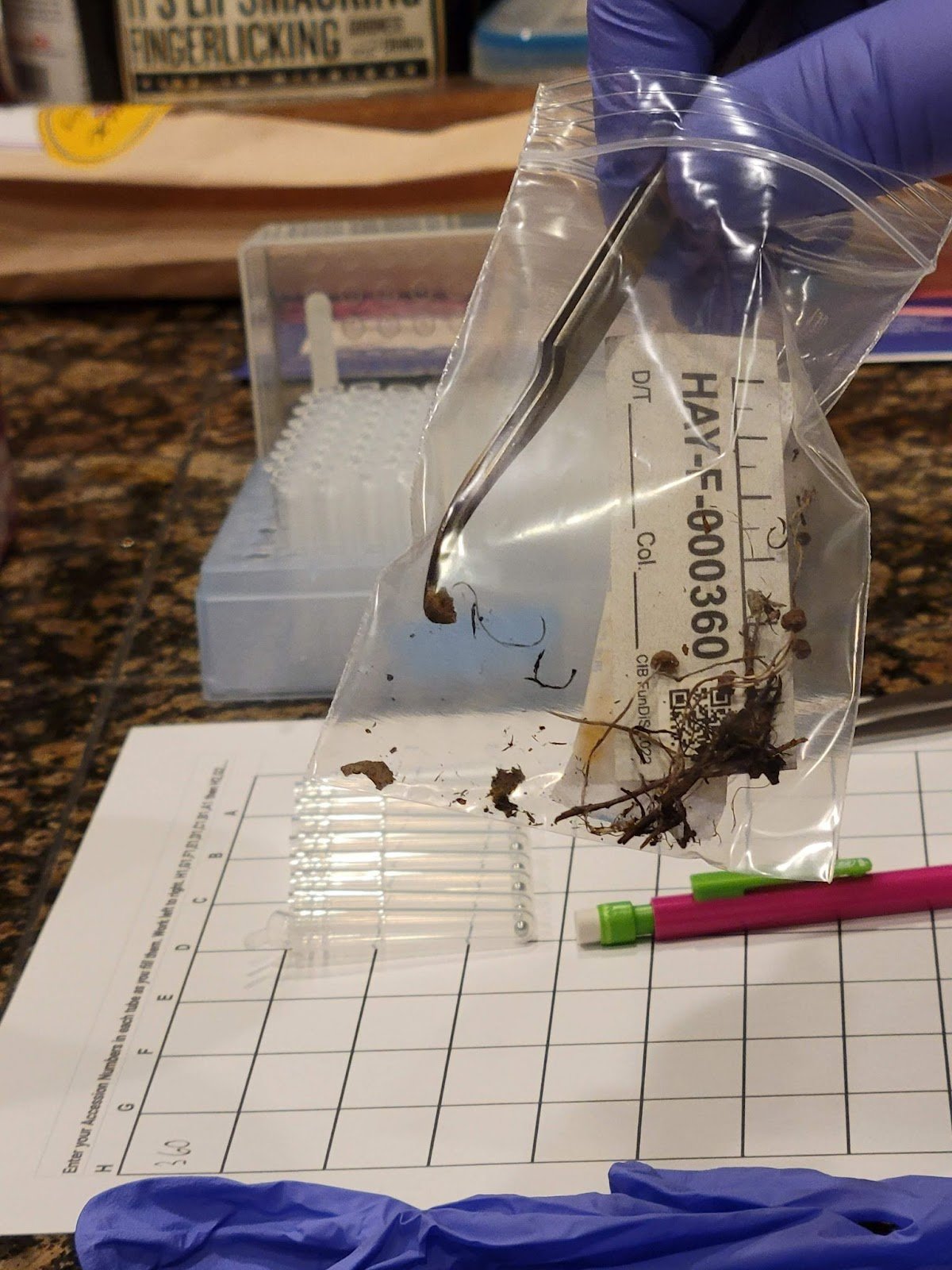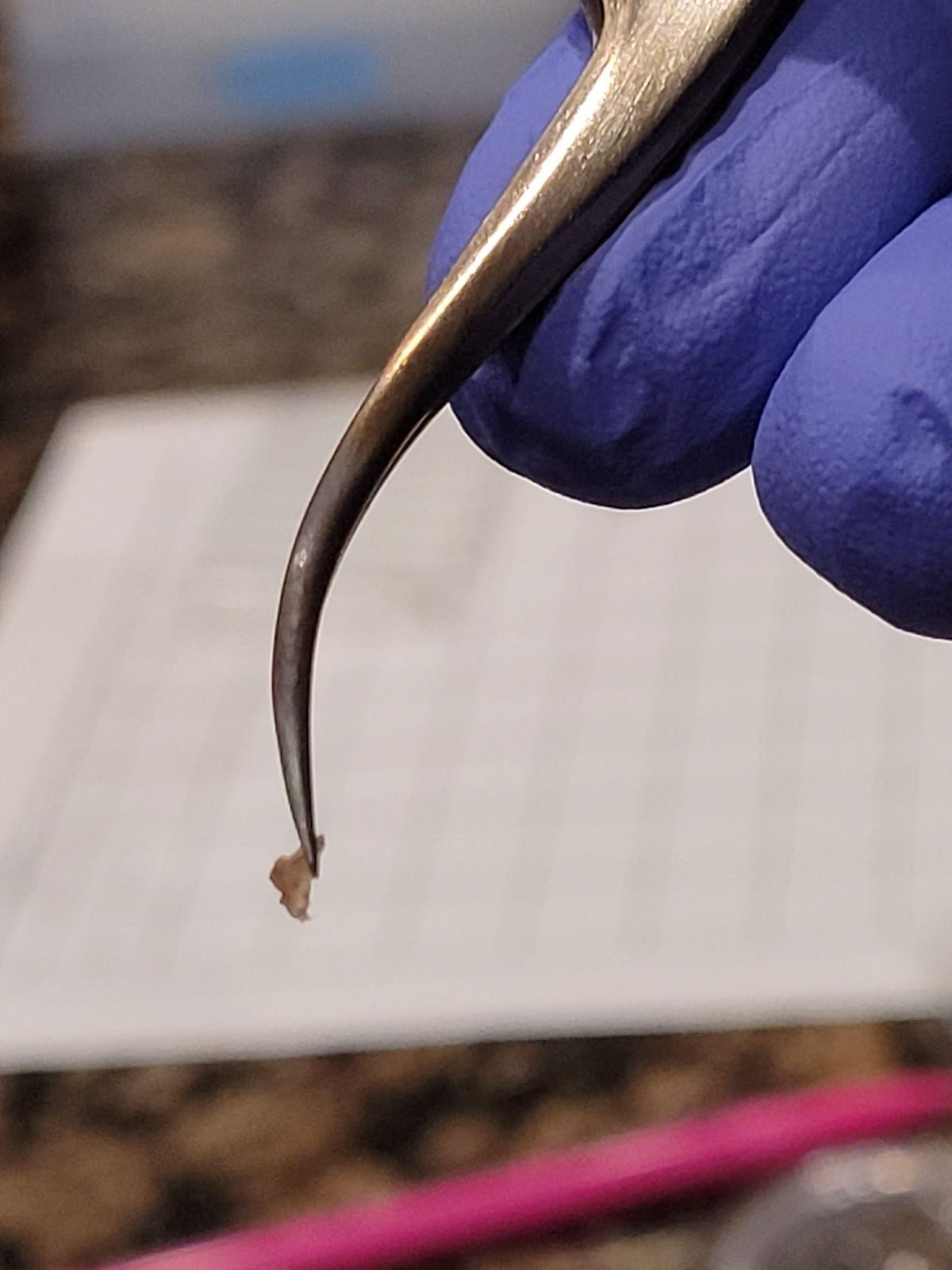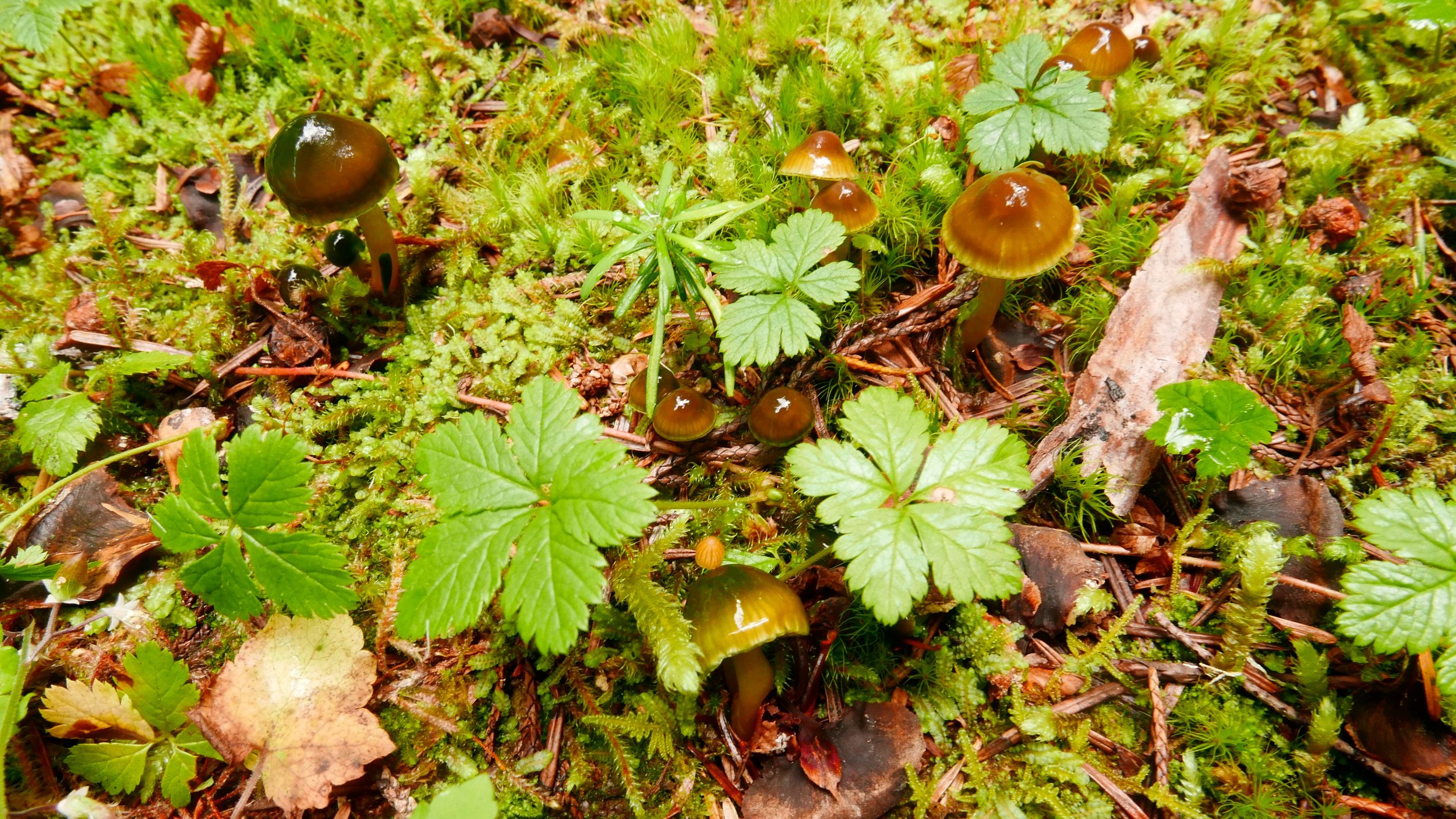Sampling & sequencing mushroom specimens
Photo by Mandie QuarkCollect Tissue for Sequencing
This protocol was made by Harte Singer, FUNDIS sequencing program director. For more photos and details, visit protocols.io page!
Gather your materials
Your mushrooms - kept together in a box or a bag.
Another box or bag to place finished specimens
Tweezers -a fine tip non-serrated for most specimens and a dissecting needle for any tough material.
A fine-tip Sharpie
A box of Kimwipe tissues
A small glass or plastic container with some 70% isopropyl rubbing alcohol.
12 strips of 8-well PCR tubes in a PCR tube rack
An empty PCR tube rack
A trash vessel to discard dirty kimwipes.
A device to access your data entry spreadsheet
(Optional) A pair of nitrile gloves
(Optional) Razor Blade/Scalpel
(Optional) A pencil
(Optional) A printout of the instructions for reference
(Optional) A printout of your 96 tube rack template
TISSUE SAMPLING
Find a suitable place to conduct tissue sampling. A hard, nonporous surface that can be wiped clean with rubbing alcohol is ideal. Turn off any fans and close any windows so there is minimal air movement. Wash your hands and gather your materials and mushrooms for sampling.
Set up one of the PCR tube racks and with very clean hands, remove each strip of PCR tubes from its package and close each of the lids before placing the strip into a row of the empty PCR tube rack.
Using a sharpie, label the hinges of each PCR strip using the pattern depicted in the photo. Also label the first tube in each strip from 1-12 going from the top to bottom as depicted. Additionally, you can label the last tube in each strip with the plate number, so if this was plate number 5, the last tube on the right of each strip would be labeled 5. This is not depicted in this photo.
Dip your tweezers into the alcohol and then wipe them using a piece of clean kimwipe. You don't need a whole square and can just rip off a small piece, but make sure to wipe the tweezers thoroughly and repeat this until you are confident they are clean. Alcohol will not destroy DNA, it just helps remove the debris on the tweezer. Most mushrooms don’t make a ton of debris, but be extremely careful with puffballs or any mushroom with a lot of powdery spores that tend to become airborne. It is best to save these specimens for the end of sampling to avoid potentially cross-contaminating
Set tweezers down such that the tines do not come in contact with anything while you grab the mushroom.
Remove the lid from the tube rack, then remove the first strip of 8 tubes from the tube rack and place it in the second rack for sampling. The first tube on the left will have 1 written on it and the first hinge will be marked.
Grab a box/bag of mushrooms and enter the accession number into the data entry sheet in the first corresponding cell. Write the tube number back side of the voucher slip (i.e. 1-1, 1-2 … 12-8).
Open the box/bag of mushrooms and either reach in with the tweezer or take out the mushroom and place on a clean surface away from your tubes. Carefully remove a small piece of tissue. You will only need a piece about 1x1mm. Hymenium tissue works best. Gills, pores, gleba, apothecia etc. See below for sampling instructions based on specific mushroom type. Hymenium tissue has a high density of DNA. It is critical that you only take clean tissue. Any dirt, plant matter, or other contaminants will negatively impact the results. Take care not to cause too much damage to the specimens. Just take your time and take as little as you can. Too much tissue will negatively impact the results. Make sure you do this operation away from your tube rack to minimize the chance of cross contamination. The amount depicted in these photos is about the maximum amount of tissue you want to use.


Place the tissue into the open tube and release it, or gently tap/wipe the tines inside the tube. Remove the tweezer and place it aside to be cleaned and close the cap. Static electricity can make samples stick to the sides of the tubes or make the bits of mushroom behave in a way you dont expect. Be mindful in your movements.
Clean your tweezers and proceed with the next specimen.
Place each completed strip back in its row in the original tube rack and remove the next strip of tubes for sampling.
Instructions for specific fungi
gilled Mushrooms
Sample a very small piece of the gill. This will yield the highest concentrations of DNA . Don’t destroy the entire cap as there are important diagnostic structures on the surface that are needed for identification.
Mushrooms with pores
Sample a very small piece from the pore tissue. Polypores are typically tough, so you might need a razor blade or scalpel. Healthy-looking pore surface should be cut from the underside of the polypore to about 1 mm deep.
Crust fungi
Sample from the inner surface of the cup - the part that generally faces away from the substrate. Sometimes there will be a stalk and sometimes there isn't.
INVERTED CRUST FUNGI EG. HELVELLA, MORELS
Sample from the exterior of the tissue on the end of the stalk.
TRUFFLES
Sample from the interior of the mushroom. Typically there will be one or more samples that are sliced in half.
Stinkhorns
Take pieces of the spore-bearing surface (gleba) to obtain the highest concentration of DNA.
Puffballs
These are similar to truffles in appearance, but contain a soft, often powdery interior. Sample the inner material, but be very careful to avoid releasing a puff of spores. It is a good idea to save these for last to avoid cross-contamination. Avoid breathing spores.
CRUST FUNGI
These are mushrooms that are flat against a substrate. They can have many textures such as pores, teeth, or they can be smooth. In general, you can sample any part of these, but be careful not to dig into the substrate. Sample by scraping a bit of material off with the tweezers if the surface is completely flat.
BIRD’S NEST
These are little cups that contain "eggs" called peridioles. Try to break apart a peridiole and sample that material.
Sequencing Mushroom Specimens
You can send your mushroom specimens to a variety of places to get DNA sequencing, or you can even DNA sequence your own using FUNDIS protocols and Sigrid Jakob’s PCR and sequencing protocol.
Labs currently accepting mushrooms for FREE sequencing include Ohio Mushroom DNA Lab and Mycota Lab.
Analyze Your DNA
Volunteer Sequence Validation Corps
Study the publicly accessable guidebook that the Volunteer Sequence Validation Corps uses for the most up-to-date, comprehensive guide. Plus, look for opportunities to learn from FUNDIS, Ohio Mushroom DNA Lab, Mycota Lab, and the North American Mycological Association’s DNA Sequencing Committee when the cohort is open for applications.
Analyze on BOLD
BOLD is FUNDIS’s new sequencing partner. Please be patient while we develop the BOLD analysis pipeline.
Analyze on MycoMap
Legacy project dashboards and protocols for MycoMap, managed by Stephen Russell.
Sequence editing & Phylogenies
How to edit trace files and turn them into useful data. Video and tools by Alan Rockefeller.
Is It a New Species or Variety?
How to interpret differences in DNA sequences and make phylogenetic analyses. Blog post by Jean Lodge.



